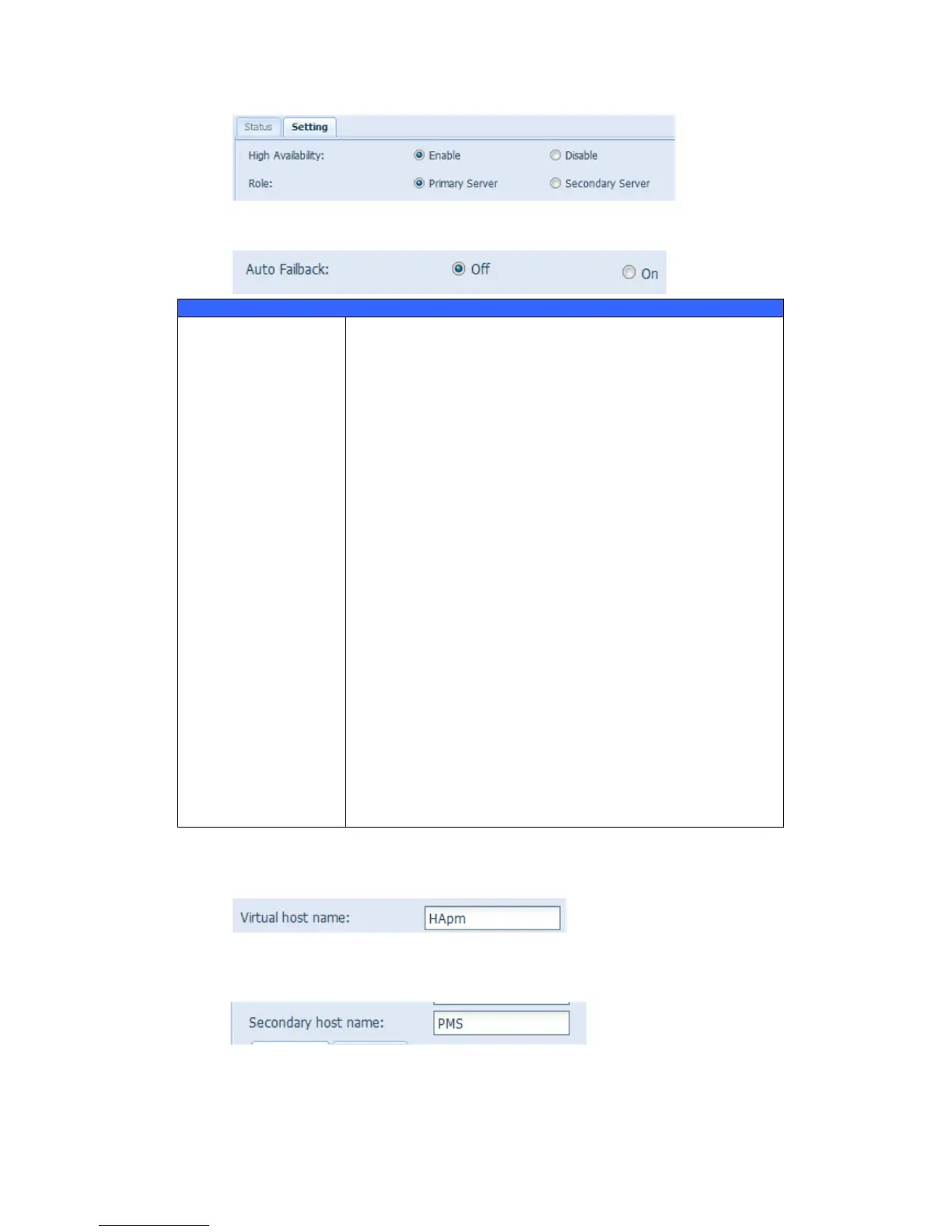In legacy Heartbeat clusters, the auto failback option would
determine whether a resource would automatically fail back to
its "Active" node, or remain on whatever node is serving it until
that node fails, or an administrator intervenes. The possible
values for auto failback were:
on - enable automatic failbacks
off - disable automatic failback
When auto failback is off (default): After the original
active server is damaged and then returned to a healthy
state, the original standby server will remain active and
the original active server will go into standby mode. The
servers will exchange roles.
When auto failback is on: After the original active server is
damaged and then returned to a healthy state, the original
standby server will go back into standby mode and the
original active server will become active again. The
servers return to their original roles.
With or without auto failback, synchronization will begin
immediately without a break in service when the damaged
server returns. The roles described above are assumed
immediately and do not need to wait for synchronization.
The virtual IP will always be mapped to the current active
server.
v. Fill in the “Virtual Server” hostname information for further access need. For
this example, we will use “HApm” for the virtual server hostname.
vi. Fill in the “Secondary Server” hostname information. For this example, we
will use “PMS” for the secondary server hostname. Please make sure the
associated Secondary server with the “PMS” host name has been setup.
vii. Fill in the “Virtual IP” information:

